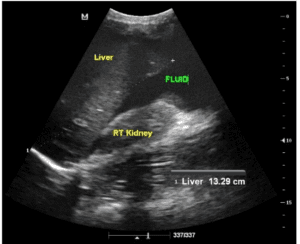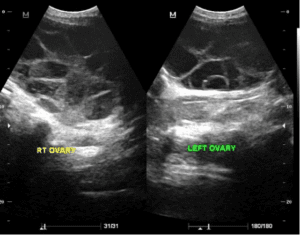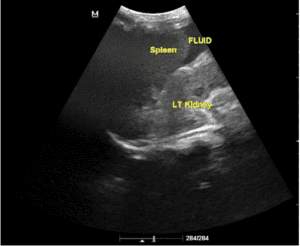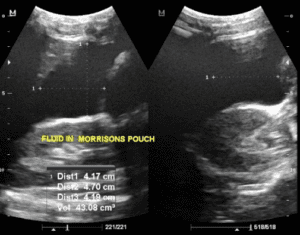A 23-year-old female presents to the emergency department with complaint of abdominal swelling, nausea, and loss of appetite 24 hours after a procedure of oocyte retrieval, having undergone controlled ovarian stimulation. There is no history of trauma. Patient’s vitals were stable. Repeat hemoglobin did not show any change.
The following are transverse and longitudinal B-mode images.
What is the most likely diagnosis?
A. Ovarian hyperstimulation syndrome
B. Malignant ascites
C. Massive intraperitoneal hemorrhage




Images courtesy Dr. Dagnechew Degefu
The most likely diagnosis is ovarian hyperstimulation syndrome.
Explanation
The B-mode images show bilateral enlarged ovaries with multiple prominent theca lutein cysts giving the classical spokes-wheel appearance of Ovarian Hyperstimulation Syndrome. There is also free intraperitoneal fluid collection in the Morrison’s Pouch and peri-splenic spaces. Since the vitals are normal, the patient is to be observed. The history, physical exam findings and lab reports all are important to come to a correct impression in this case. Hemoglobin levels should stay constant. If hemoglobin levels are dropping significantly or vitals become unstable then an internal vascular injury could also be considered.
References:
- https://radiopaedia.org/articles/ovarian-hyperstimulation-syndrome-1?lang=us
- https://doi.org/10.1016/j.jemermed.2016.11.026
- https://doi.org/10.1155/2013/653704
Want to test your POCUS knowledge further?
Try out our 7 question OB first trimester knowledge check!




















